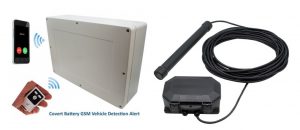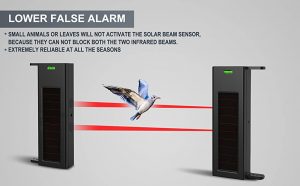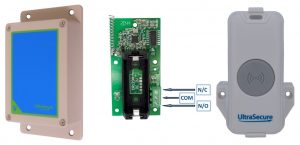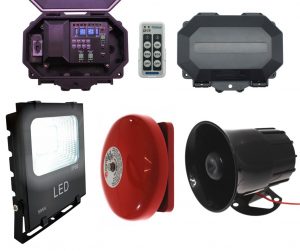Driveway Alarms (or Alerts) were first established in the U.S 25 years or more ago, they are designed to monitor mainly outside locations around your Home or Business, but they can also be used to monitor various internal locations such as Outbuildings, Garages, Workshops & Sheds.
They are used to detect both Intruders, Visitors or Large Animals, so they can be used in many different domestic & commercial applications.
Most Driveway Alarm Systems will consist of one or more Sensors & a simple Indoor Chime Unit which will inform the occupants inside the building to the presence of the visitor (friend or foe).
In the very early days the Sensors would have been wired, but they quickly changed to using Wireless technology which resulted in faster and easier Installations, no need to hire expensive trade persons or to carry out messy cable installations.
In most situations the Sensors would be a PIR (passive infrared detector) which are designed to detect a very sudden change in temperature caused by people, vehicles and large animals passing by.
Although the PIR’s can cause occasional false alarms from wildlife, this can be greatly minimised by choosing a PIR with a narrow Beam and the correct positioning of them.
The best positioning is in most cases are:
- 1.5 – 2 metres off the ground.
- Positioned horizontally so the beam doesn’t pick up small ground animals (be mindful of this fact if your ground rises up within the detection zone).
- Not pointing directly at where a sudden ‘Sun Rise’ or ‘Sun Set’ may occur.
- If possible 2 to 5 metres away from the start of the desired detection area.
Multiple Sensors can be used with most Driveway Alarm Systems (please check with the supplier before purchasing, even if you only want one Sensor to start with, as you may want to expand in the future).
Other type of Sensors are now available which can be used on their own or together with one or more PIR’s, these include:
- Covert Vehicle Detectors, the benefits include:
- Pet Friendly (ideal for locations where there are large animals roaming around).
- Covert (they can be hidden underground, totally out of sight).
- Door & Gate Contacts, the benefits include:
- Pet Friendly.
- Being aware that the Gate has been physically Opened (standard models).
- Being informed a Gate has been left Open (special models) .
- Laser Beams, the benefits include:
- Further Detection Range (commonly up to 100 metres).
- Dual Beams (reduces false alarms).
- Very Accurate Detection Beams.
- Transmitters (which can be connected to all types of security & safety devices).
Although the very basic Chime units still exist, some of the Receivers allow additional accessories to be added, these include:
- Indoor & Outdoor Sirens & Bells.
- Flashing LED’s.
There are also some new developments such as Outdoor Receivers which allow Floodlights or Sirens to be triggered (with or without using indoor chime units), ideal for:
- Customers wanting to make the Intruder or Visitor aware they have been detected.
- Locations where people are working outside.
- Locations that may require additional Lighting upon approach.
These Alarms can be as complex or simple as you want them to be, and most Homes should have one as they will only benefit the Security & Safety.
If you need advice, Click Here for Advice.
Visit and give us your thoughts on our other Blogs !!










